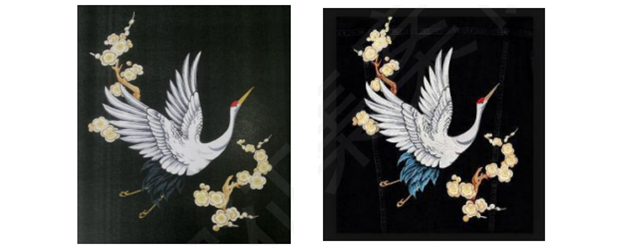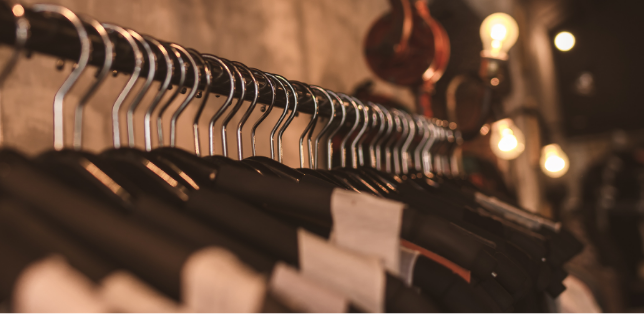The Guangzhou Internet Court recently made public a decision finding that copying another's clothing style may amount to unfair competition. The case is one of the few cases in China to date where the Law against Unfair Competition has been successfully used to combat the copying of clothing style, and is the first case to characterize such conduct as constituting unfair competition in the nature of a confusing association.
Background
Guanghzou EPO Fashion Co., Ltd. (“EPO”) is responsible for the popular clothing brands MO&Co and Edition MO&Co. According to publicly available information, EPO's overall revenue in 2020 exceeded US$1.5 billion.
EPO discovered that consumers who used the "search the same style" or "find similar" features offered by e-commerce platforms were directed to clothing lines provided by Hangzhou Laizhe Clothing Co. Ltd. ("Laizhe"). Laizhe offered the same style of clothing, albeit under a different trade mark. The layout, colour scheme, tailoring style, decorative patterns, and embroidery graphics of these garments were all very similar to those of EPO. In addition, the promotional slogans and model photos used by Laizhe also mimicked the style and content of those produced by EPO (see below). Nearly 100 EPO outfits appeared to have been copied or imitated, but Laize sold these items for about one-third of the EPO price.
| Example of apparel, graphics and model photo of EPO | Example of apparel, graphics and model photo of Laizhe |



Facts
EPO brought a case to the Guangzhou Internet Court against Laizhe alleging copyright infringement and unfair competition. Specifically, the defendant had used the plaintiff's copyrighted embroidery graphics on its garments, and the defendant's imitation of nearly 100 of EPO’s garments confused consumers and misappropriated the plaintiff's rightful market share, also constituted unfair competition.
Laizhe countered that the plaintiff's clothing styles and graphic patterns were not original and should not be protected by copyright law, and that their garments were sold under different brands and the target audiences of the two brands were different, thus there was no confusion of commercial signs and no unfair competition.
In its first-instance judgment in December 2022, the court upheld the plaintiff's claims, ordering the defendant to pay RMB 905,000 (about US$ 135, 000) in damages and expenses and to issue a public apology. Case ref. (2021) Yue 0192 Min Chu 11888.
In its decision, the court held that commercial confusion prohibited by the Law against Unfair Competition is not limited to confusion caused by imitation of commercial signs (e.g., trade marks, business names, trade names, etc.), but also includes confusion resulting from imitation of trade dress, and that clothing styles, model photos and promotional slogans can be included in the category of trade dress. The court held that the "search the same style" feature on e-commerce platforms may be technically neutral, but some consumers using the feature might expect to find the same clothing style of similar quality. As the defendant not only imitated the plaintiff’s clothing style, but also imitated its model photos and promotional slogans, these acts taken as a whole were likely to mislead consumers into thinking that there was a specific association between the defendant's clothing and the plaintiff, thus causing cognitive confusion and harming the plaintiff's market interests. The court also held that the defendant's action in closely following the plaintiff in launching clothes of the same style also seized an unfair competitive advantage. As such, the court found that the defendant's conduct constituted unfair competition.
Comments
Protecting design and style of clothing has long been a legal challenge.
Clothing design and style can be protected under copyright law, but to be recognized requires proof that the design and style is aesthetically unique and creative beyond simple functionality. However, the functionality of everyday clothing style often outweighs the unique aesthetic sense. This makes it difficult to obtain meaningful copyright protection for clothing styles and to combat style plagiarism. Also, copyright protection is narrow and its efficient enforcement against multiple style pirates is often hampered by the burden to prove the existence of rights in each clothing style.
In recent years, fashion houses have increasingly resorted to the Law against Unfair Competition to combat clothing style piracy. Cases have included the imitation of packaging or decoration, which leads to confusion of commercial signs that constitutes unfair competition. There have also been cases where the imitation of clothing styles improperly took advantage of the plaintiff's commercial goodwill and the competitive advantage attached to that style, constituting a more generalized unfair competitive act.
In this case, the court recognized the plaintiff's distinctive and influential clothing style, its model photos and slogans as falling within the scope of trade dress, and found that the defendant's wholesale imitation constituted "conduct sufficient to mislead people into believing that ..... there is a specific association with others" as prohibited by the Law against Unfair Competition. The finding is encouraging to fashion companies as it may open the door to a more efficient and effective remedy to address the mass piracy of fashion design and styles. But it should be remembered that there is no Common Law tradition in China and it remains to be seen whether and to what degree this approach may be adopted by the courts in future similar cases.



